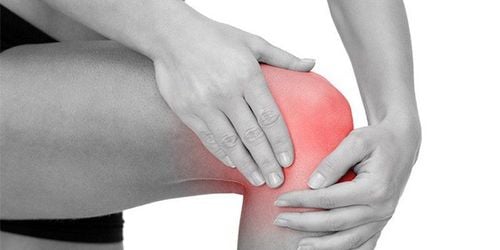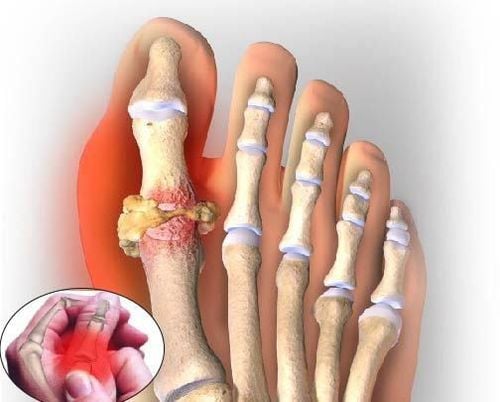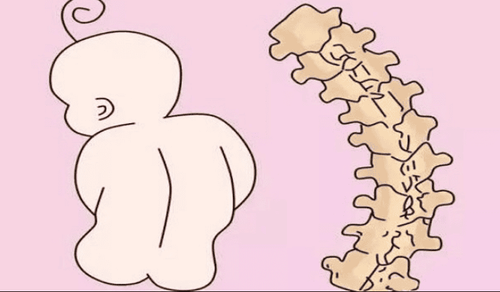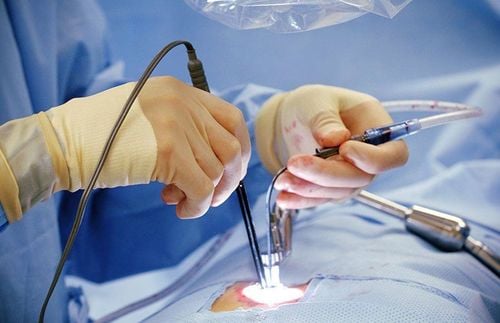This is an automatically translated article.
The article was professionally consulted by Specialist Doctor II Pham Van Minh - Orthopedic Doctor - Department of General Surgery - Vinmec Phu Quoc International General Hospital.Congenital scoliosis is a defect in the curvature in the horizontal plane of the spine at birth. Children with congenital scoliosis sometimes have other accompanying abnormalities such as abnormalities in the kidneys or bladder.
1. What is congenital scoliosis?
The shape of the child's spine develops and changes in stages. But the degree of natural curvature in each stage is still on a certain straight line that is seamless of the entire spine from the neck down to the end of the coccyx.
During the embryonic stage, the spine will have a curved arch. After birth, the baby's spine changes from arched to straight, until the baby knows how to raise his head and practice rolling, the neck segment begins to curve forward to raise the head and form a curve in the neck. When the child learns to sit, the spine curves forward at the lumbar region and back at the sacrum to keep the torso upright. By adulthood, the spine has two forward bends, the neck and the waist, and two backward curves, the thoracic and sacral segments. Congenital scoliosis is an abnormal curvature of the spine, where the curves are displaced and pushed through the left or right side of the straight spine. Usually, patients with congenital scoliosis when viewed from the back, the shape of the spine will be abnormally tilted to one side.
Compared with scoliosis due to the impact on the spine, congenital scoliosis is less common, according to the average calculation, about 10,000 children are born with 1 child with congenital scoliosis. This deformity develops more and more clearly and depending on the degree of curvature of the spine will affect the life of the sufferer.
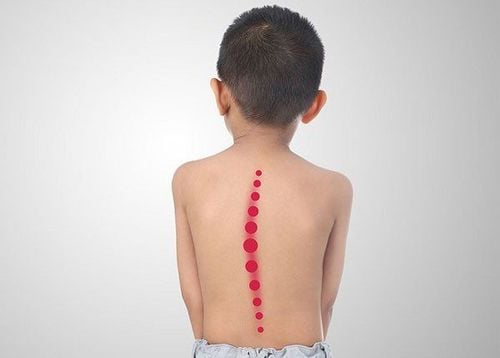
Vẹo cột sống bẩm sinh là tình trạng cột sống cong bất thường
2. Causes of Scoliosis
The backbone is considered the main and very important bone part of the body, so since its formation in the fetus, the spine has been clearly shaped and developed. Birth defects due to maternal effects during pregnancy or specific congenital genetic factors are as follows:
2.1 Genetic factors When one parent has congenital scoliosis, the risk of transmission to children are very high because they are influenced by this genetic resource.
2.2 Factors arising during pregnancy When a mother is pregnant, the fetus's rapid growth and failure to adapt to the size of the mother's womb will cause the child's body to be compressed and the spine to develop. deviated. Mothers are exposed to toxic substances, Western drugs or eat foods that cause the risk of birth defects. During pregnancy, the fetal position does not move or be subjected to strong impacts. When giving birth, the cervix is too narrow, causing compression on the child's spine...
In addition, some cases of children with congenital abnormal spine structure or abnormal brain and spinal cord structure also cause the spine crooked life.
3. Classification of congenital scoliosis
3.1. Incomplete formation of vertebrae Because the spine is formed before birth, part of one (or more) vertebrae may not be fully formed. When that happens, the abnormalities are called hemispinal defects and can form a crooked angle in the spine. The crooked angle can get worse as the child gets older.This abnormality can occur with one or more different vertebrae over the entire length of the spine. When more than one vertebra has hemiplegia, the vertebrae will sometimes compensate for each other and make the spine more balanced.
3.2. Incomplete division of vertebrae During fetal development, the spine is first formed as a single continuous column, which then separates into segments and becomes vertebrae. Failure to do so will result in partial or complete fusion of two or more vertebrae.
This will stop the growth of the spine from the side after the child is born and cause the degree of scoliosis to increase gradually as the child grows older.
3.3. Combination of spondylolisthesis and fusion of spondylolisthesis The combination of spondylolisthesis and spondylolisthesis causes very serious problems for spinal development. In these cases, surgery may be necessary at an early age to prevent increased curvature of the spine.
3.4. Compensatory curves In addition to the scoliosis, the spine of young children may also develop a compensatory curve to maintain an upright posture. This happens when the spine tries to compensate for a scoliosis curve. By creating other curves in the opposite direction above or below the affected area. The vertebrae have a normal shape in the compensatory curve.
4. Signs to help detect congenital scoliosis
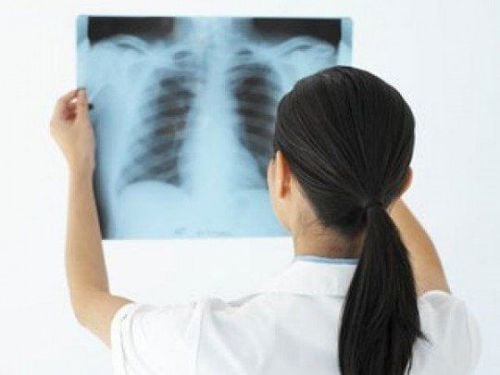
Bệnh nhân sẽ được kiểm tra từ bên ngoài hoặc tiến hành chụp X-quang nếu nghi ngờ bé có dấu hiệu cong vẹo dị tật cột sống bẩm sinh
Usually after the birth of a baby, specialists will have an external examination or conduct an X-ray if they suspect that the baby has signs of congenital malformations of the spine.
However, if some cases are not detected at birth, when seeing the following specific signs, it is necessary to take the baby for examination to detect if there is a scoliosis of the spine:
4.1 The shoulder blade Usually, when children have scoliosis, the two shoulder blades will have a certain difference in height and low depending on the deviation of the spine and which side of the scoliosis is tilted, the shoulder blade on that side will be affected. lower.
4.2 Overall hip When paying close attention to the child's hips, one side is higher and the other is lower, the rib lines are unevenly exposed to the skin (one side is completely convex and the other side is not convex).
4.3 When looking at the whole back from the back It is found that the spine does not follow a certain straight line but has certain abnormal curves, the vertebrae are raised or twisted in different ways. In some cases, the two hollow lines on either side of the waist will be completely different.
4.4 Body imbalance In case of undetected severe rib deviation, the body will be completely tilted to one side, in some cases the neck will also be pulled to the side.
Early recognition of signs of congenital scoliosis has an important effect in early treatment to avoid dangerous complications when left for too long. If parents see that their child has the above abnormal symptoms, take them to a medical facility for examination and treatment.
Pediatrics department at Vinmec International General Hospital is the address for receiving and examining diseases that infants and young children are susceptible to: viral fever, bacterial fever, otitis media, pneumonia in children, .... With modern equipment, sterile space, minimizing the impact as well as the risk of disease spread. Along with that is the dedication from the doctors with professional experience with pediatric patients, making the examination no longer a concern of the parents.
Please dial HOTLINE for more information or register for an appointment HERE. Download MyVinmec app to make appointments faster and to manage your bookings easily.




